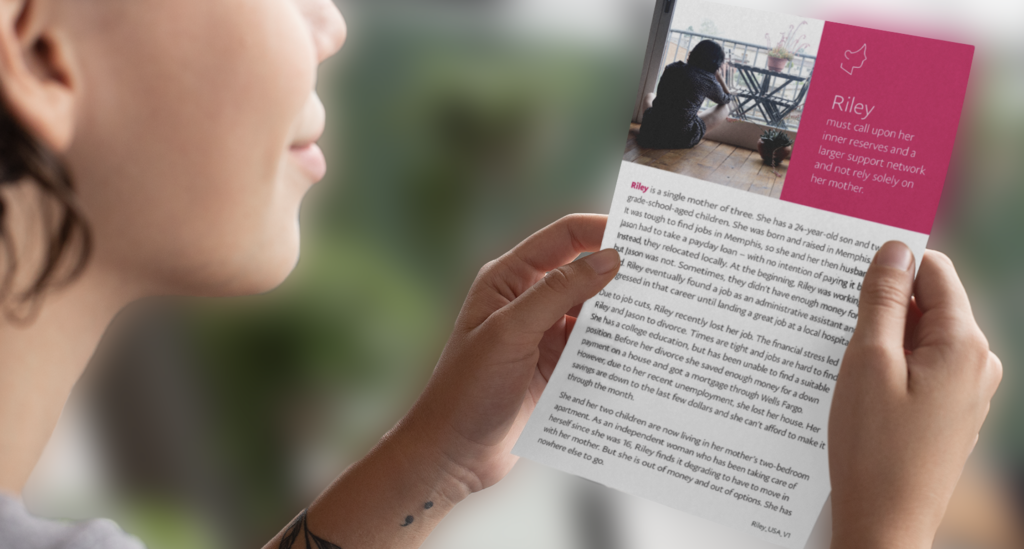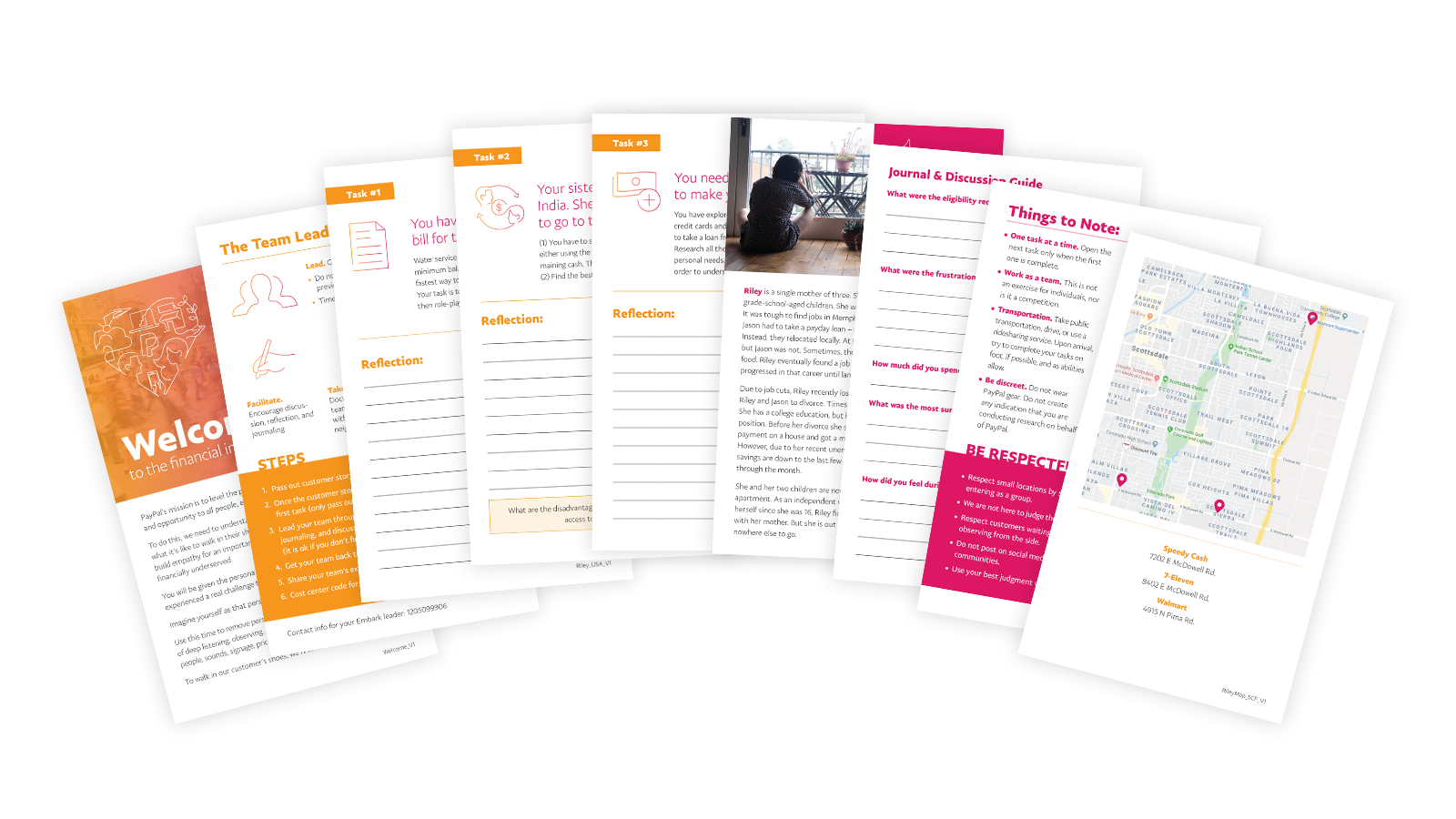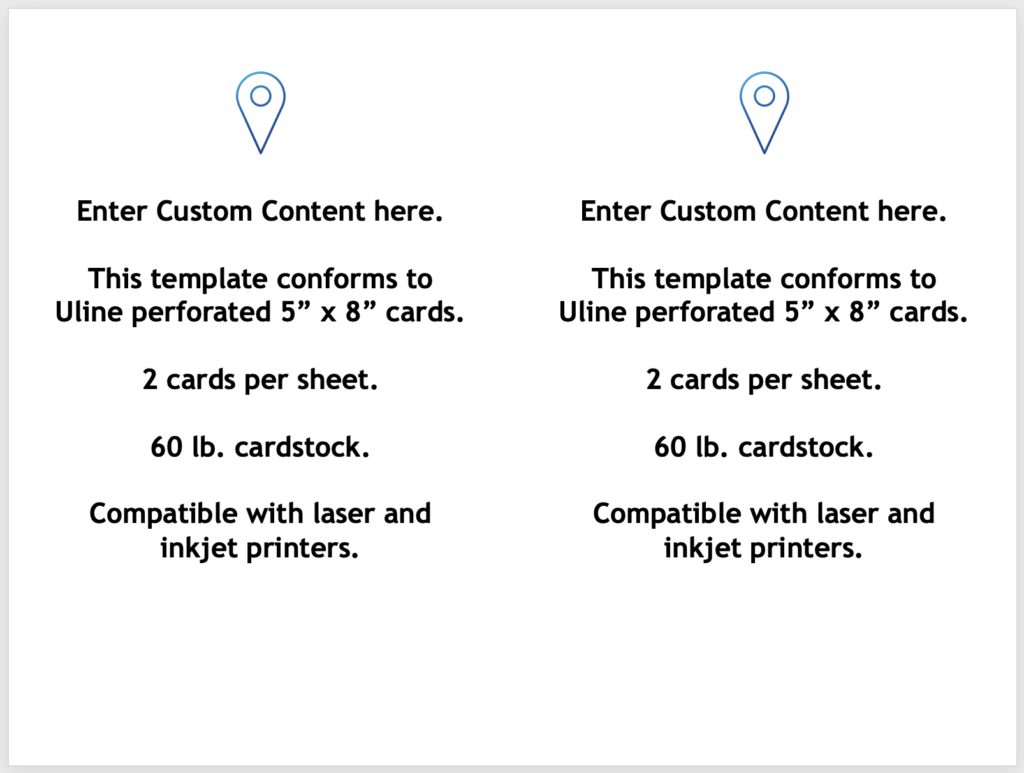
Project Background
PayPal takes customer empathy seriously, and one way they infuse that concept is by having all new employees participate in an exercise during onboarding. In it, PayPal employees are invited to walk in customers’ shoes by experiencing life changes and decisions that affect their finances.
The program is deployed in nine locations around the world. Teams in each location are given three to four customer personas, with three tasks to complete for each persona. As the program grew, PayPal found itself with 108 versions to manage – stored in various servers, all in Microsoft Word.
The Opportunity and the Solution
We saw a prime opportunity to re-envision the whole system to not only enhance the user experience, but also improve how the system is visually designed, versioned, managed, and scaled. We:
- Refined all stories and instructions to be more clear, more consistent, culturally appropriate, and use more visuals than words
- Redesigned to better reflect PayPal’s brand and visual identity
- Innovated on ways to simplify versioning and streamline a process for updating
- Created a system that could be distributed globally but customized locally— without requiring outside design services




Summary
The devil is in the details. While strategy is important, it is useless without solid tactical implementation.
This exercise asks PayPal employees to walk in the shoes of their customers. GBW starts all of our projects that way. To deliver our solution, we put ourselves in the shoes of the people participating in the exercise; we role-played and visited every step to see if there was an improved way to communicate, motivate, or challenge . The influence we had on the design, production and execution make this exercise more enjoyable and effective for users, and simpler to manage and scale for managers.